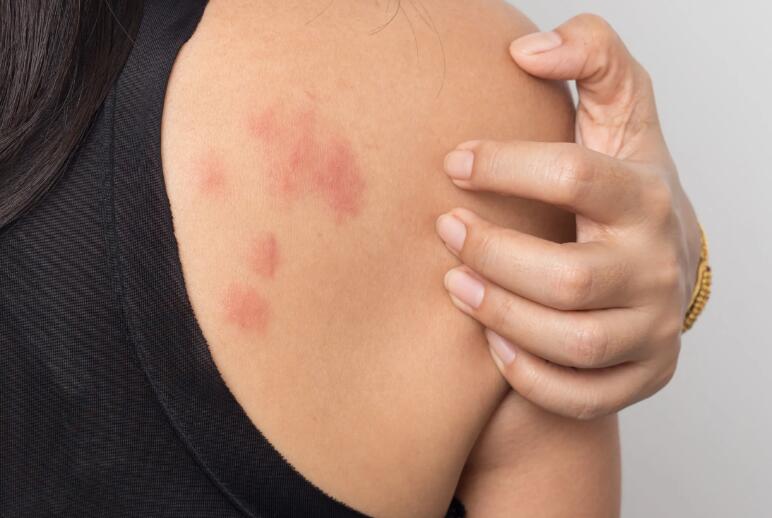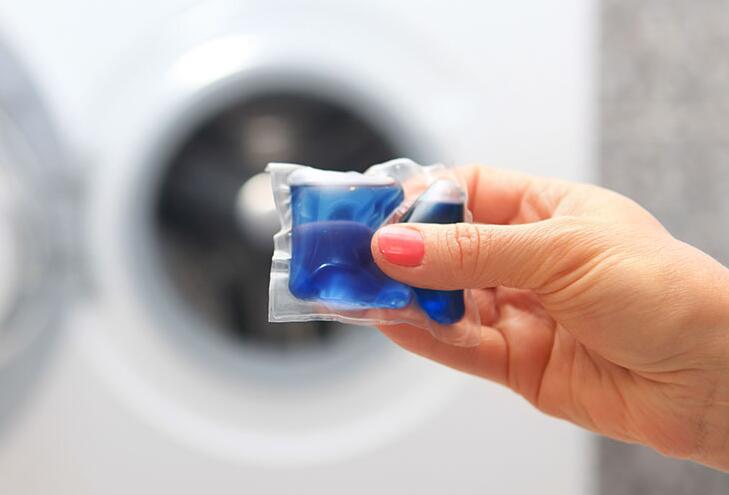If you’ve ever developed a rash after wearing newly cleaned clothes, you might be experiencing laundry detergent allergy symptoms.
This condition is caused by an allergic reaction to an ingredient in laundry detergent, and can affect specific parts of your body or spread over all areas that come into contact with your clothes.
In this article, we will discuss the causes of laundry detergent allergies, their symptoms, and how to prevent or treat this condition.
How to Identify Laundry Detergent Rashes?
The most common symptoms of laundry detergent rashes are redness and itchiness on the skin.
In some cases, hives or swelling may also occur. If you’re experiencing any of these symptoms after using a new laundry detergent, it is likely that you have developed a rash from the product.
To identify laundry detergent rashes, look for any signs of skin irritation such as redness and itchiness. If the rash is only present on certain parts of your body (such as underarms or chest), then it is likely that laundry detergent was the culprit.
It is important to note that the rash will usually appear within 24 hours after exposure to the allergen and may last for several days or weeks depending on how severe it is.
What Does a Laundry Detergent Rash Look Like?
A laundry detergent rash typically appears as red bumps or patches on the skin, often accompanied by an itchy or burning sensation.
The rash is usually located on areas of the body covered by clothing during laundering, such as the chest or stomach, though it can also appear on your neck, arms, legs, or any other area where fabric comes into contact with your skin. In more severe cases of allergic reactions, hives may also appear.
How Long Does a Laundry Detergent Rash Last?
The length of time a laundry detergent rash persists depends largely on the severity of your individual allergic reaction and whether or not you take steps to reduce its effects.
Mild cases of detergent rashes generally last between 2–7 days and don’t require special treatment beyond avoiding further contact with the triggering allergen (in this case, the laundry detergent).
For more severe cases where hives have appeared, however, prescription medications may be required to properly manage and relieve symptoms.
Common Laundry Detergent Allergy Symptoms
The laundry detergent allergy rash looks like small, raised bumps or hives, and can be localized to one area of the body that came in contact with the laundry detergent, or spread over larger areas. The most common laundry detergent allergy symptoms are:
- Itchy skin all over your body
- Redness or inflammation in the affected areas
- A burning sensation in the affected area
- Small raised bumps or hives on the skin
The laundry detergent allergy rash can vary in severity and often depends on how much of the laundry detergent came into contact with your skin. In some cases, laundry detergent allergies can also cause swelling and difficulty breathing. If you experience any of these symptoms, seek medical attention immediately.
Laundry Detergent Allergic Causes
Laundry detergent rashes occur when the skin comes into contact with an allergen in the detergent.
The most common allergens are fragrances, preservatives, dyes, or other ingredients found in laundry detergents.
Even people who don’t have sensitive skin may find themselves dealing with these types of rashes if they use a detergent that contains harsh chemicals or fragrances.
Fragrances and dyes are the most common cause of an allergy to laundry detergent.
These ingredients are found in almost all types of detergents and can trigger allergies in some people.
The fragrances used in these products can cause skin rashes or respiratory issues if you’re sensitive or allergic to them.
It’s also possible that certain fabrics like wool or polyester could be causing your allergic reaction—if this is the case, switching fabrics could help reduce your symptoms.
Other potential allergens include preservatives, optical brighteners, and enzymes.
These ingredients are added to detergents to make them more effective at cleaning clothes but can also be irritating for some individuals.
Laundry Detergent Contact Dermatitis vs. Skin Damage
One of the most common questions we hear from our patients is about the differences between laundry detergent contact dermatitis and skin damage.
It’s important to understand these two conditions to properly treat your skin and prevent further irritation.
We’ll break down each condition and discuss the signs, symptoms, and best treatment practices.
Contact dermatitis
Contact dermatitis occurs when a person is allergic to a substance that comes in contact with their skin. In this case, it is typically caused by laundry detergents.
Symptoms may include redness, itching, burning sensations or hives. These reactions are typically localized to the area of contact but can spread to other areas if not treated quickly.
It’s important to note that laundry detergent allergies are very rare; more often than not, contact dermatitis is caused by harsh chemicals in detergents rather than a true allergy.
Skin damage
Skin damage is caused by long-term exposure to irritants present in laundry detergents.
Unlike contact dermatitis which is an acute reaction, skin damage happens over time as a result of continued use of an irritating product.
Symptoms may include dryness, flaking or cracking of the skin, and itchiness or burning sensations on the affected areas if they become too dry or irritated.
It’s important to use mild detergents that are free from harsh chemicals if you have sensitive skin or suffer from chronic skin conditions such as eczema or psoriasis.
Laundry Detergent Allergy Symptoms Treatment
The best way to treat laundry detergent allergies is to identify and avoid the allergen causing your reaction.
If you experience symptoms despite taking these precautions, contact your doctor or an allergist for further evaluation.
They can help you determine the underlying cause of your laundry detergent allergies and provide recommendations for best managing your condition.
For more severe cases of allergic reactions, your doctor may prescribe medication such as antihistamines which can help reduce inflammation and provide relief from itching and discomfort.
They may also recommend immunotherapy injections which have been shown to improve symptoms over time in some patients with severe allergies.
You can also look for laundry detergents specifically designed for sensitive skin.
It’s also important to practice good laundry habits. Use cold water to wash clothes, avoid overloading the washing machine, and rinse the laundry thoroughly after washing.
In addition, wearing gloves when doing laundry can help reduce irritation from contact with fabrics that have been washed with regular detergents.
How to Prevent the Laundry Detergent Allergy?
If you’ve been experiencing allergic reactions after doing your laundry, there are several strategies that can help reduce your risk.
First and foremost, look for hypoallergenic detergents that don’t contain any fragrances or dyes.
Many brands now offer unscented versions of their products specifically designed for those with allergies or sensitivities.
Additionally, opt out of fabric softener sheets if possible—liquid fabric softeners are less likely to cause an allergic reaction than sheets.
Finally, consider switching fabrics if necessary; natural fibers like cotton and linen tend to be less irritating than synthetics like polyester and nylon so they may be a better choice for those prone to allergies.
Conclusion
Detergent allergies are relatively common but they can still cause an array of uncomfortable symptoms if not treated properly.
If you suspect that you may have an allergy related to laundry detergents, it is important that you seek medical attention right away so that you can get proper diagnosis and treatment for your condition before it worsens over time.
By understanding your symptoms and working closely with your doctor, you can find ways to manage your allergy without having to give up on doing household chores altogether!



